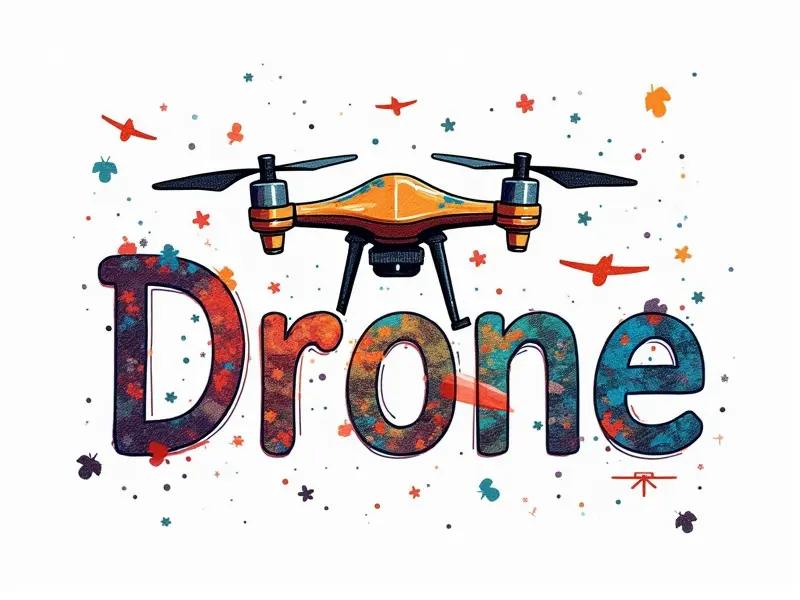What’s an FPV drone?

Why Use an FPV Drone?
FPV (First Person View) drones have revolutionized the world of aerial photography and racing. These high-tech devices offer a thrilling, immersive experience that traditional RC aircraft cannot match. By using a video transmitter and receiver setup, pilots can see what their drone sees in real-time, providing unparalleled control and maneuverability.
Introduction to FPV Racing Drones
FPV racing drones are specifically designed for speed and agility. They feature lightweight frames, powerful brushless motors, and high-speed propellers that allow them to reach incredible speeds of up to 100 mph or more. The compact size and maneuverability make these drones ideal for navigating tight spaces and performing complex aerial maneuvers.
Understanding FPV Technology
The core technology behind FPV drones involves a video transmitter (VTX) that sends live footage from the drone's camera to a receiver worn by the pilot. This creates an immersive first-person view, allowing pilots to control their drones as if they were flying them themselves.
Key Components of FPV Technology
- Video Transmitter (VTX): Sends video signals from the drone's camera to a receiver.
- Receiver: Receives and displays the video feed on a screen or goggles worn by the pilot.
- Camera: Captures high-definition footage for transmission.
Exploring FPV Drone Technology
The technology behind FPV drones is constantly evolving, with advancements in battery life, camera quality, and flight control systems. Modern FPV drones are equipped with advanced features such as GPS stabilization, obstacle avoidance sensors, and high-resolution cameras for capturing stunning aerial footage.
Advantages of FPV Drone Technology
- Real-Time Control: Pilots can make split-second decisions based on live video feedback.
- Enhanced Maneuverability: The ability to see from the drone's perspective allows for more precise control and navigation.
- Increased Safety: FPV technology helps pilots avoid obstacles and maintain situational awareness, reducing the risk of crashes.
Getting Started with FPV Flying
If you're new to FPV flying, there are several steps to take before taking your drone out for its first flight. Start by assembling a basic FPV setup, which includes purchasing a drone frame, motors, ESCs (Electronic Speed Controllers), propellers, and the necessary electronics such as the VTX and receiver.
Essential Gear for Beginners
- Drone Frame: Choose a lightweight and durable frame suitable for your skill level.
- Motors & ESCs: Select high-performance motors and ESCs to ensure optimal flight performance.
- Propellers: Use propellers that match the motor specifications for maximum efficiency.
FPV Drone: The Ultimate Guide
This comprehensive guide covers everything you need to know about FPV drones, from choosing the right equipment and setting up your first flight to mastering advanced flying techniques. Whether you're a beginner or an experienced pilot, this guide will help you get the most out of your FPV drone.
Choosing the Right Equipment
- Budget: Determine how much you can spend on your initial setup.
- Purpose: Decide whether you want to focus on racing, photography, or both.
- Skill Level: Choose equipment that matches your current skill level and allows for growth as you improve.
FPV Drone Basics Explained
To fully understand FPV drones, it's important to grasp the basics of how they work. From the components that make up an FPV system to the principles behind flight control, this section provides a detailed overview of the essential elements.
How Do FPV Drones Work?
- Video Transmission: The VTX sends video signals from the drone's camera to the receiver worn by the pilot.
- Pilot Interface: Pilots use goggles or a screen to view the live feed and control the drone using an RC transmitter.
Why Choose an FPV Drone?
The benefits of choosing an FPV drone over traditional RC aircraft are numerous. From enhanced maneuverability and real-time control to improved safety features, FPV drones offer a superior flying experience that is unmatched by other types of drones.
Advantages of FPV Drones
- Immersive Experience: The first-person view provides an unparalleled sense of immersion and control.
- High-Speed Performance: FPV racing drones are designed for speed, allowing pilots to reach incredible velocities.
- Advanced Features: Modern FPV drones come equipped with GPS stabilization, obstacle avoidance sensors, and high-resolution cameras.
FPV Drone Setup for Beginners
Setting up your first FPV drone can be a daunting task, but with the right guidance, it's easy to get started. This section provides step-by-step instructions on assembling an FPV setup, configuring your equipment, and testing everything before taking flight.
Step-by-Step Setup Guide
- Assemble the Frame: Attach motors, ESCs, and propellers to the frame.
- Install Electronics: Mount the VTX, receiver, battery, and other components securely.
- Configure Settings: Adjust settings on your transmitter and receiver for optimal performance.
The Future of FPV Drones
The future of FPV drones looks bright as technology continues to advance. Innovations such as improved battery life, higher resolution cameras, and more sophisticated flight control systems will further enhance the flying experience and open up new possibilities for both recreational and commercial use.
Emerging Trends in FPV Drone Technology
- Battery Efficiency: Longer-lasting batteries will enable longer flight times without compromising performance.
- Camera Quality: Higher resolution cameras will capture even more stunning aerial footage.
- Safety Features: Advanced obstacle avoidance and collision detection systems will make FPV flying safer than ever before.
Conclusion
FPV drones offer a thrilling, immersive experience that traditional RC aircraft cannot match. With their high-speed performance, advanced features, and real-time control capabilities, these devices are perfect for both racing enthusiasts and aerial photographers alike. Whether you're just starting out or looking to take your flying skills to the next level, FPV drones provide endless opportunities for fun and exploration.

